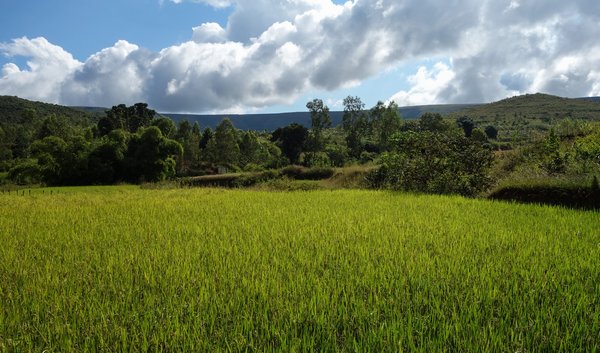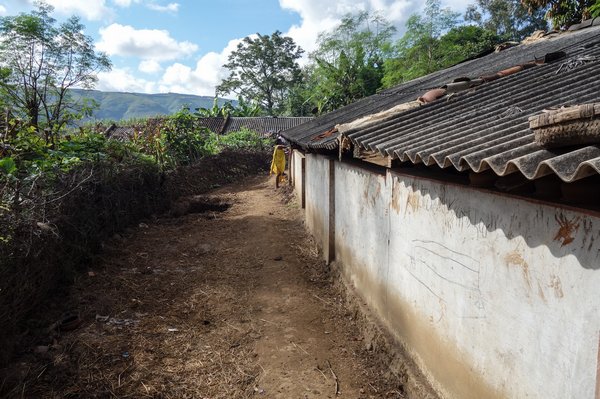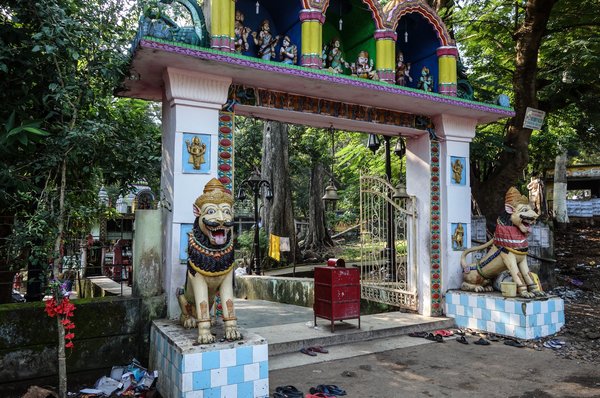I apologize for the length of this post–it’s huge because I’m covering our entire stay in the state of Odisha. I lumped the five cities together due to the fact that we almost exclusively visited what are referred to as the “tribal areas.” Puri was a slight exception, but even there our bike ride through the surrounding regions took us to tribal areas.
A word of planning about visiting the tribal areas. You need to acquire a special permit to visit the sensitive areas, and the permit can take up to ten days to process so plan ahead. My understanding for the permit requirement is that there was a time when foreign and Indian companies alike were brutally exploiting the area and its people, so the government took over supervising tourism and commerce in the area. The visit is worth the permit hassle; Odisha is a lovely state with a unique feel. The countryside is clean, quiet, picturesque, and is inhabited by the Adivasis people who retain many of their tribal traditions. You’ll note from the pictures that the women in particular decorate their faces ornately.
Goudaguda
Our first stop in Odisha was a market near the town of Goudaguda. Both places are so small that they do not show up in my Lonely Planet book.
One of the features of the market is that the Adivasis people supposedly still barter for some goods. I can’t say that I actually saw any bartering taking place, though our guide did point us to a woman who he said was trading her clay pots for vegetables. Instead I saw plenty of people using money, and once you have money available it doesn’t really make sense to barter so I can see why bartering wasn’t prevalent.
Some shots from the market:







We stayed in the Chandori Sai Guesthouse which was founded by an Australian fellow named Leon who hasn’t gone home in over 15 years. He was a successful engineer at some point in his career and on a vacation to India (pre-GPS) he got lost and ended up a good 100 kilometres off-course. He ended up in Goudaguda and was taken aback by the tranquility of the area. Soon after he decided to build a guesthouse. It was too much of a hassle for him to purchase the land, so the land where he built the guesthouse is actually owned by the family of the fellow who led us around the countryside the day after we arrived. They have a long-term lease in place and the plan is to leave the guide’s family the guesthouse when Leon is no longer able to run the place. Leon currently runs the place consisting of half a dozen rooms with a crew of about six women, and he’s taught them to make some tasty western dishes. They make some killer pizzas, bread, roast chicken and his specialty, apple pie.
Some photos of the guesthouse’s dinning area:


Note the ceiling decorated with saris:

As I mentioned above, the following day we went on a walk through the surrounding countryside. As you can see there are a lot of rice paddies around and plenty of livestock:





One of the villages we visited along the way:



The tree line in the background is made up of eucalyptus trees that are harvested for their pulp every three years. Sadly, the soil can only sustain three cycles of eucalyptus trees after which the land is useless for 15-20 years:




A second village along the way:


The fellow below makes the local home brew. Unfortunately, to accelerate the fermentation process, they have been known to add fertilizer. The resulting alcohol is slightly toxic but incredibly cheap:

More pictures from that second village:


Sadly the woman below who looks like she is having a great time, was wasted out of her mind. At 11:00 am. I would have to say that about half of the people that we ran into in that village were drunk.




We spent two amazing nights in the Chandori Sai Guesthouse. There isn’t much to do in the evenings of course, but that’s half the charm of the place. It’s great to have nothing to do but explore the countryside during the day, come back for a great dinner, and just sit back and talk or watch movies in the evening. It was a nice change of pace from the usual hectic pace of India.
Muniguda New Hope Community
We spent the following night at the nearby town of Muniguda which contains the New Hope Community. The community has a school for kids with special needs, an old age home, and a hospital that specializes in surgeries for people who’ve been affected by leprocy. The official position of the Indian government is that leprocy has been eradicated in India, but the 10,000 or so surgeries performed at the hospital since its founding indicate otherwise (the official response of the government is that the patients must have acquired the disease from outside of India).
The shot bellow shows the kitchen building for the guesthouse complex:


The New Hope Community:


For dinner that night, they set up a campfire for us and we dinned al fresco:

Before leaving the following morning, we invited the kids to come onto the bus for a short little ride:



Taptapani
We had a bit of a long drive that day to Taptapani, arriving in the evening. It was really a transit town for us, though the place is known for some hot springs. However, the drive over was absolutely amazing–we passed by a bunch of interesting little villages and great scenery along the way.
Some photos I took from the truck:












As I noted above we got the resort a bit on the late side, so we only had time for dinner that night–and in time for a little bit of immaturity on my part. In certain parts of India they commit to the Britishism of using the Latin “cum” in written situations where “and” would have worked perfectly well:

We made an early departure the following morning but we had time to check out the temple housing the local hot springs. Locals use the springs for their daily baths, all the more so in the winter months when the hot water is particularly enticing.
Photos of the temple area:



From far away, the tree below appears to have interesting flowers with red petals. In reality those are ribbons that are tied to the branches by worshipers as part of a prayer:


I didn’t want to intrude too much into people bathing, so I took a photo from far away of the men’s bathing tank only:

Gopalpur-on-Sea
We arrived in Gopalpur in the early afternoon, just in time for lunch. Gopalpur-on-Sea was historically a seaport, and was then turned into a beach resort by the British. When India gained independence, the place stopped catering to tourists and many of the British buildings got run down. In the 1980’s the site was revived for local tourism, but a pretty significant portion of the place is still in ruins (as you can see from the top photo below). There aren’t too many good restaurants around or much of a night scene but the beaches are really clean. And since this place caters pretty much exclusively to Indian tourists, this a pretty good place to relax if you want to avoid western tourists. In our entire time there, I did not see a single western person aside from those in our group.
Some photos:



The waves don’t look too bad in the picture below, but those are morning waves. The waves in the evening hit hard and come up to at least chest level. The water was very nice the previous evening so I went out for a swim with Flo and Yves. Now, due to the situation with the waves, the area around the shore was far too rough for swimming so we ventured out about 300 metres to get past the waves. The water out there was absolutely fine for swimming. But for the fact that we were too far out to touch the bottom, we could have stayed out there indefinitely. The tricky part was coming back in.
There were no currents pulling us out to sea, the problem was that we were facing about 200 metres on the way back with pretty heavy waves, making it hard to swim for much of a stretch before having to turn around to duck under a wave or get pummeled. It took the better part of 10 minutes and 90% of my energy to make it back with that crazy back and forth. All of which to say, I’m a solid swimmer and I had a hard time so unless you’re rock solid, don’t get out too far.

Puri
Puri is the best known of the cities in Odisha. For Hindus, the Jagannath Mandir makes it one of the holiest cities in India. It also used to be a big hippie city in the 1970’s, known for the legal bhang (edible marijuana) scene at the time (bhang is still technically legal in the city but the bhang scene is pretty much non-existent in Puri these days). The city is also known to locals for the long sandy beaches, but I actually didn’t have time to check out the beaches even though they were just a few blocks away (I was a bit beached out by then, so didn’t make it much of a priority).
A temple on a man-made lake:

As I noted above, the Jagannath Mandir is a major destination for Hindi pilgrims. Jagannath is the Lord of the Universe, and yet another incarnation of Vishnu. He is usually painted as having a jet black super-friendly face. I’ll point it out in a house painting in a shot below.
The temple was built in 1198 and houses some of the tallest religious structures in India–the huge spire in the rear is 58 metres tall. The massive complex employs 6000 men to perform the rituals and a total of 20,000 other people make their livelihood from the temple. Unfortunately, the temple complex is closed off by high walls and is not accessible to non-Hindus. However, a nearby library (Ranghunandan Library) allows tourists to go on its roof to get a glimpse of the temple complex.
Photos from the roof of the library:


Two photos from street-level:


The following morning we took some boats to visit nearby villages:



In this village, when a couple gets married, they paint a heart with their names on the facade of their home:


That night, we ate at Wildgrass Restaurant. The restaurant has a bunch of charming grass huts where small groups of people can eat, as well as amazing food:

The next morning we departed on an early morning bike ride to explore some nearby villages. Some photos from the ride:

People doing their laundry by the river:

Our ultimate destination was the village of Raghurajpur which is an artist village 14 kilometres north of Puri. It’s a great place to purchase some unique local art at very reasonable prices.
The village:

The dark-faced fellow on the far right is Jagannath. Told you he looks super-friendly:

One of the artists. I bought a hand-painted postcard from him precisely because he was happily just painting in front of his house and not trying to sell his stuff at all. A true artist at work!

We finished up the day by visiting the Sun Temple in the nearby town of Konark. It is thought that the temple was constructed in the mid-1200’s by the Odishan king Narashimhadev I to celebrate his victory over Muslim forces. The temple was constructed to be a representation of the cosmic chariot of the sun god Surya. Accordingly, there are 24 ornate wheels around the temple to support the weight of the massive chariot. The temple was only actively used for 300 years before the spire collapsed for reasons lost to history (speculative causes range from cyclones to Muslim invaders).
The Sun Temple:





I’ll leave you with a picture of a cool lion sculpture that I saw on the street in Konark:


Nice post…I think the tribal area photos are amongst the best on the blog yet.. Maybe keep them in mind for printing?
I like the city shots too.
LikeLike
Me encanta el pintor. Que cara de buena gente!! Por otro lado, el leon esta sensacional.
LikeLike
Que efecto mas lindo el de los saris en el techo.
LikeLike